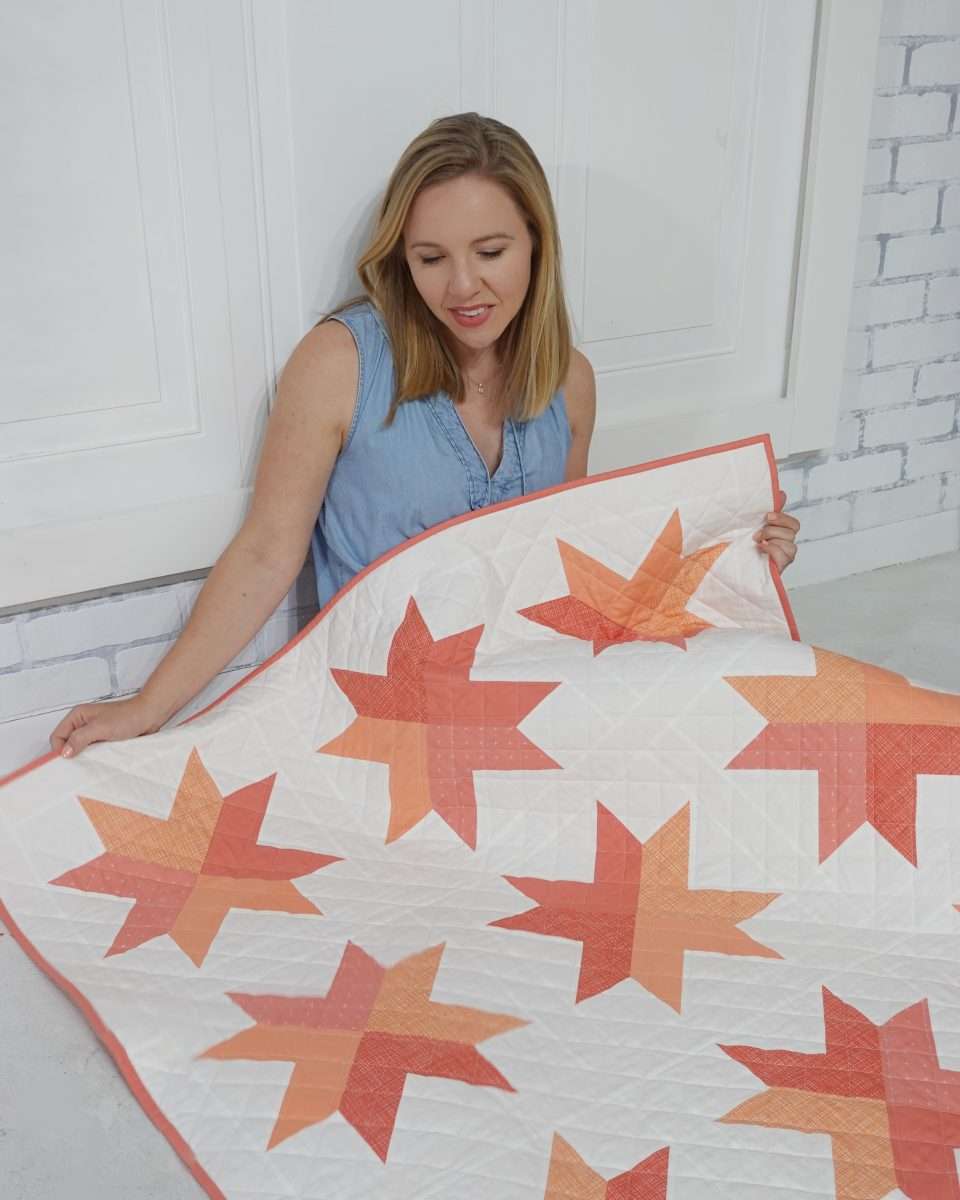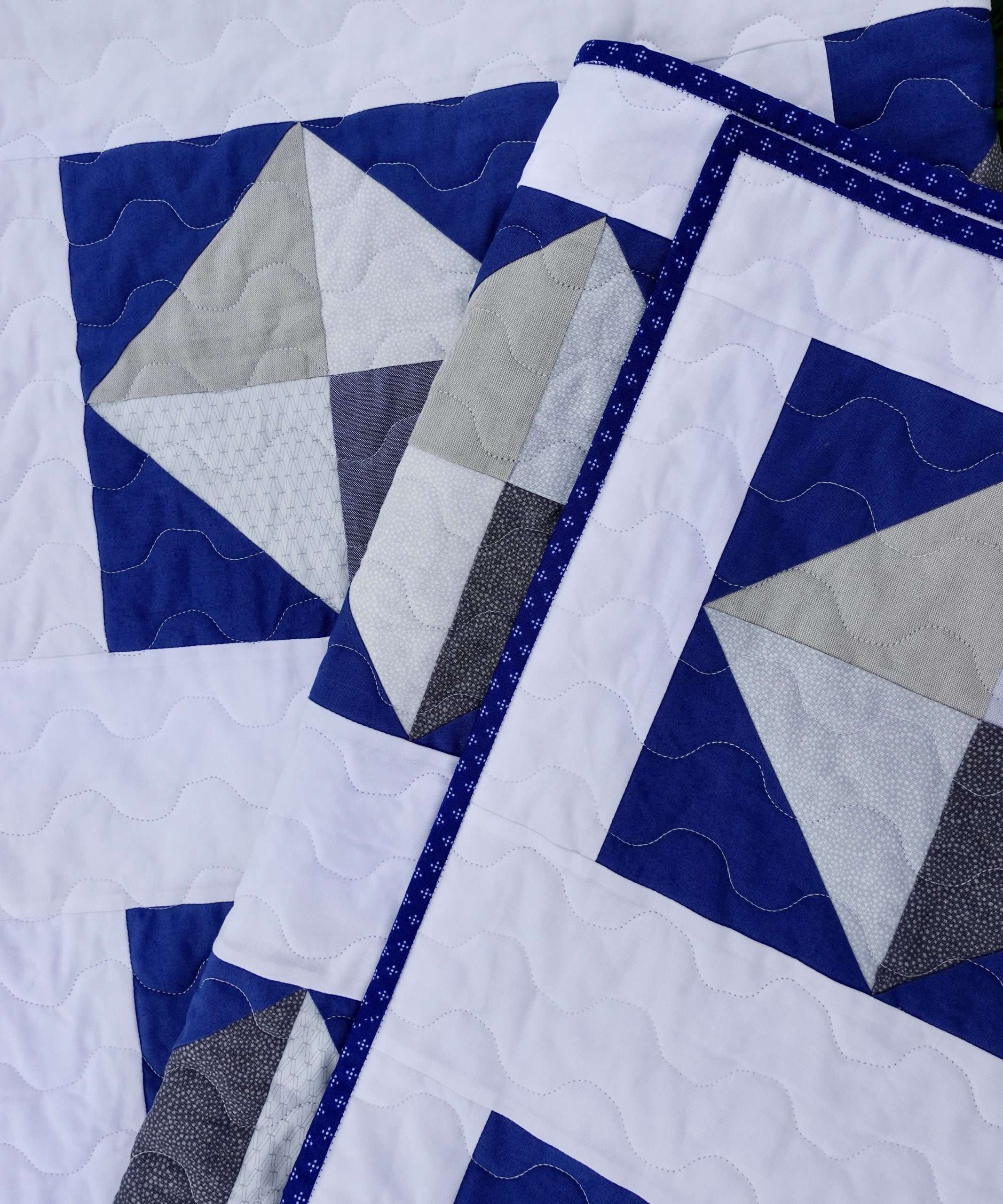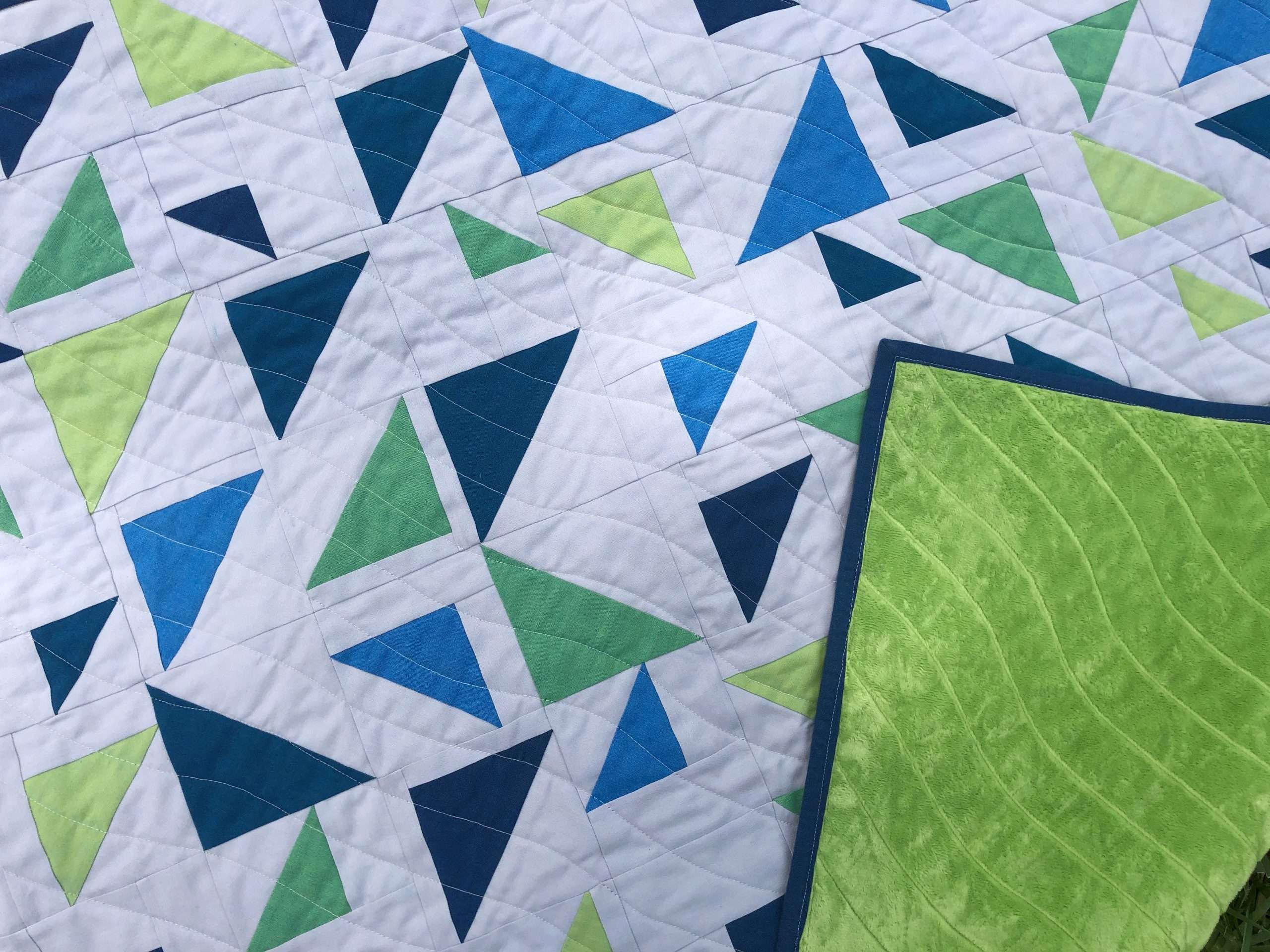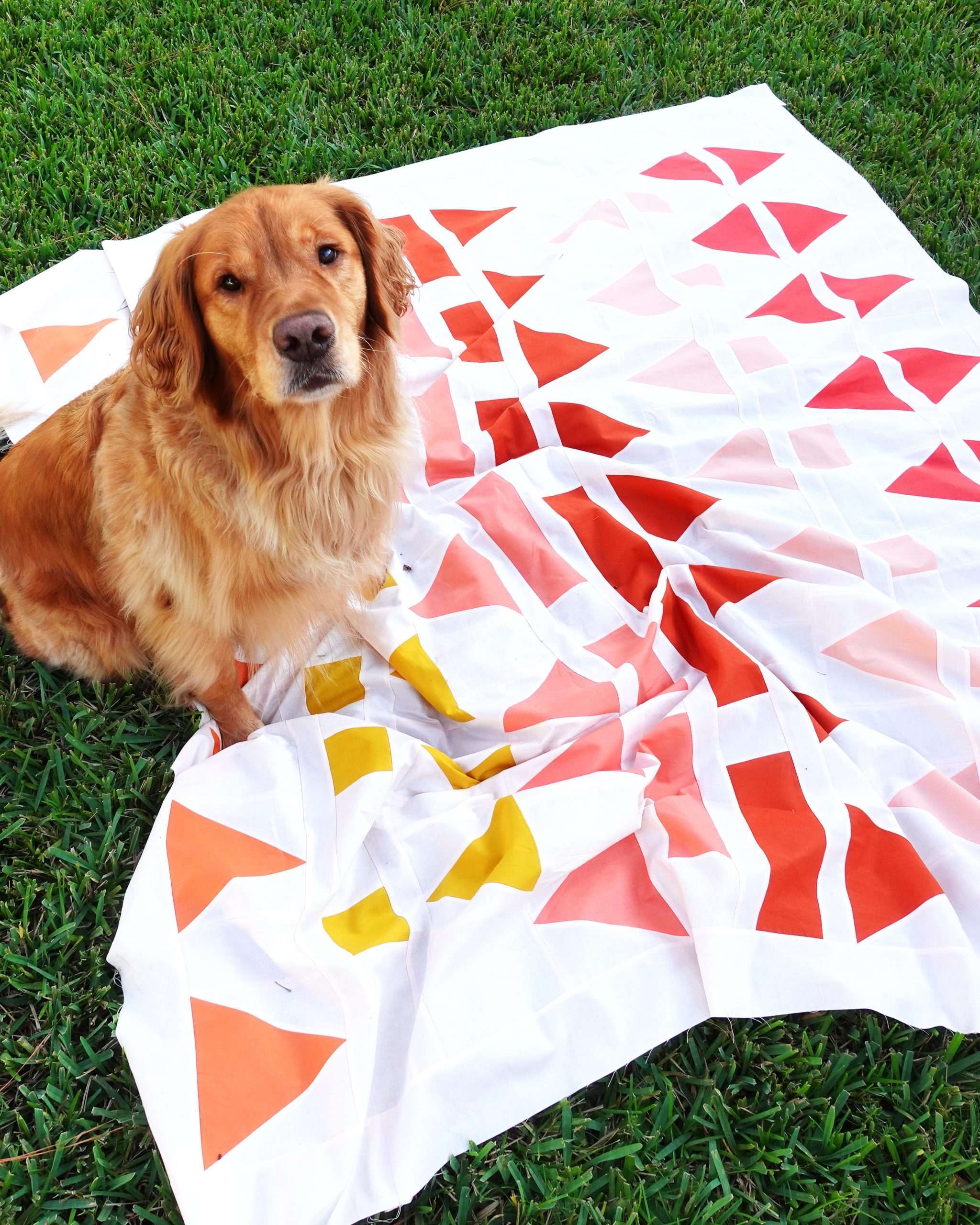Beginner Quilter’s Guide to Cutting Fabric
One of the most essential beginner quilting skills to learn is how to cut fabric for a quilt. A rotary cutter and an acrylic quilting ruler are two of the most common tools to use for cutting your fabric. In this tutorial, we’ll go over the steps for using these tools and share some safety tips to keep in mind.
Essential tools you will need for cutting fabric
Here are the basic tools you will need to follow along with this tutorial for cutting your fabric for quilting. Keep in mind there are tons of different brands and products out there, and these are just some of my personal favorites.
- Cutting Mat
- Acrylic Rulers: at least one that is 24″ long and a few squares too!
- Rotary Cutter
- OR grab a set of all 3 like this one
- Rotary cutter replacement blades
If you’re brand new to quilting, you might also want to check out this more complete list of quilting tool recommendations:
The Evolution of Fabric Cutting Tools
A little history lesson for you: Rotary cutters revolutionized the process of cutting fabric for quilting when they were introduced in the 1970s. In terms of the whole history of quilting, this is actually a pretty new invention! Prior to the rotary cutter, quilters used scissors or a pencil and paper template to cut their fabric. The process pre-rotary-cutter was time-consuming and often resulted in uneven and inaccurate cuts. The invention of the rotary cutter made it possible to cut through multiple layers of fabric with ease and precision, saving us modern quilters lots of time and effort. Today, rotary cutters are a staple tool in any quilter’s toolbox and have contributed to the growth and popularity of quilting!

Before you start Cutting Fabric
Selecting Fabric and a Quilt Pattern
The first step in cutting fabric for your quilt is to choose the quilt pattern and fabrics you want to use. If you’re a beginner, it’s a good idea to start with an easy pattern and some simple cotton fabric, as it’s easier to cut and handle than some other types of fabric. Once you’ve chosen your pattern, it should tell you exactly how much fabric you need for the project.
-
 Sail Quilt Pattern (Paper)$12.00
Sail Quilt Pattern (Paper)$12.00 -

Grab your quilt pattern and fabric and let’s get it ready for cutting!

Preparing Quilting Fabric for Cutting
Another thing you’ll want to do before you start cutting your fabric is to get it ready. Some people prefer to pre-wash all their quilting cottons before cutting. On the other hand, I personally prefer not to pre-wash but instead I treat my fabric with Best Press by spraying the starch alternative onto the fabric and then pressing with a hot iron.
However you decide to prep your fabric, just make sure it is flat, crisp, and wrinkle-free.

Step 1: Choose your ruler
There are many types of rulers available, but for quilting, you’ll want to use an acrylic quilting ruler. Quilter’s rulers are transparent with markings on them every 1/4″ or even 1/8″, which makes it easy to see your fabric underneath and ensure that your cuts are straight and accurate. There are many sizes and shapes of quilting rulers available, but a 6″ x 24″ ruler is a good size to start with. You may also consider investing in some rulers in various size squares too. Keep in mind you can always use a ruler that is larger than your desired cuts, but the larger rulers do become a bit cumbersome if you are cutting smaller pieces.
These are the rulers that I personally find the most useful. I’ve collected these over many years of quilting, so keep in mind you don’t need to go get them all at once, but they sure are nice to have!

Step 2: Prepare your workspace
Before you start cutting, make sure you have a clean and clear workspace. You’ll want to use a cutting mat underneath your fabric to protect your surface and prevent the rotary cutter from damaging it. You’ll also want to make sure you have good lighting so you can see your fabric and ruler clearly.

Step 3: Positioning your ruler
Once your cutting workspace is set up, place your fabric on the cutting mat and smooth it out so it’s flat and even. Then, place your quilting ruler on top of the fabric, making sure it’s straight and aligned with the edges and fold of the fabric. You can use the markings on the ruler to ensure that it’s positioned correctly.
If you are right handed like me, you will want to start with the raw edge of your fabric on the right. Your ruler will be under your left hand and the rotary cutter in your right hand.
Cut first to get a clean edge
Before starting to cut out the pieces for your quilt pattern, begin by cutting off the excess raw edge. Cutting off the raw edge will provide a clean crisp edge to position your ruler on.
For the most accurate cuts, position your ruler so that the line or markings for your desired cut is directly on the edge of your fabric.


Step 4: Cutting your Fabric Strips
Now it’s time to start cutting! Hold the rotary cutter firmly and place it against the edge of the ruler. Slowly and steadily, press down on the cutter and move it along the edge of the ruler. Make sure to keep the blade of the cutter in contact with the ruler as you cut. Pay extra close attention to where your fingers are! No slicing off fingertips, please!


Step 5: Subcut into Desired Shapes
Once you’ve cut a long strip, you can subcut that piece into the shapes and sizes that your quilt pattern calls for. Most of the time for beginner quilt patterns that will mean cutting into squares or rectangles. Follow the same process above for lining up your ruler and cutting to get your desired shapes.
Step 6: Repeat as needed
Once you’ve cut your first strips and squares of fabric, move the ruler to reposition it and cut another strip. Repeat this process until you’ve cut all the pieces of fabric you need for your selected quilt pattern.

Safety tips:
- Always use a cutting mat underneath your fabric to protect your surface and prevent the rotary cutter from damaging it.
- Be sure to keep your fingers away from the edge of the ruler while cutting.
- Always keep the rotary cutter closed and out of reach when not in use.
- Use a sharp blade in your rotary cutter for the best results.
- Take your time and be patient – rushing can lead to inaccurate cuts and potential injury.
To wrap things up, cutting fabric with a rotary cutter and an acrylic quilting ruler is a quick and easy way to ensure accurate cuts for your quilting project. By following these steps and safety tips, you’ll be on your way to creating beautiful and precise quilts in no time!
Ready for more quilting tutorials? Check out the complete guide to making a quilt!






